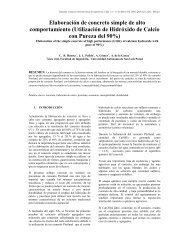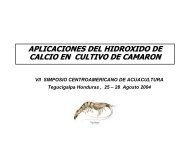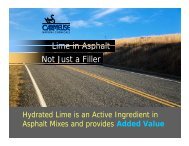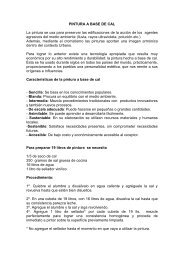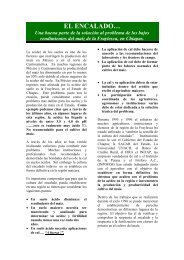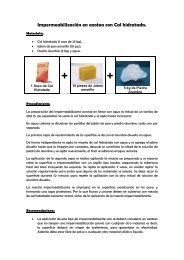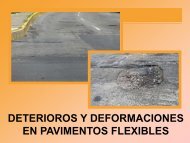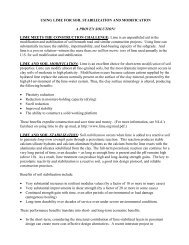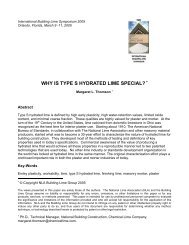Land Contamination: Technical Guidance on Special Sites: Acid Tar ...
Land Contamination: Technical Guidance on Special Sites: Acid Tar ...
Land Contamination: Technical Guidance on Special Sites: Acid Tar ...
You also want an ePaper? Increase the reach of your titles
YUMPU automatically turns print PDFs into web optimized ePapers that Google loves.
Box 2.5 Scenario: <strong>Acid</strong> tar disposal lago<strong>on</strong>s (c<strong>on</strong>tinued)By this time, disposal to formal landfill sites was not practicable, due to thereluctance of waste disposal operators to accept acid tars and a corresp<strong>on</strong>dingincrease in price per t<strong>on</strong>ne by five times over the three years. The finalmethod chosen involved in situ treatment using quicklime to neutralise theacid tars together with Fuller’s Earth. After the tar and quicklime had reactedand settled down (releasing a c<strong>on</strong>siderable amount of heat and steam), thetreated material was re-deposited in layers, compacted, covered with subsoiland landscaped.This sec<strong>on</strong>d, in situ, remedial exercise took six m<strong>on</strong>ths, twice as l<strong>on</strong>g as thatof three years previously where the wastes were taken away. The area whereacid tar wastes remained became a recreati<strong>on</strong> ground whereas the otherremediated areas where the tars were removed and replaced with limest<strong>on</strong>ewere redeveloped for light industrial units. The remediati<strong>on</strong> by quicklimeappears to have been successful, although generally the method of dispersi<strong>on</strong>by chemical reacti<strong>on</strong> was c<strong>on</strong>sidered preferable. Similar treatment methodsat another site were less successful, and should therefore be subject totreatability trials.The principal receptors of c<strong>on</strong>cern were:• human health – associated mainly with the highly corrosive acidicc<strong>on</strong>diti<strong>on</strong>s and also the physical hazard of fires and unstable ground;• groundwater and surface waters – particularly from mobile oils anddissolved phase c<strong>on</strong>taminants;• adjacent buildings and infrastructure – due mainly to the instability ofthe lago<strong>on</strong>, mobility of the tars that had broken through to the surface andfire.R&D <str<strong>on</strong>g>Technical</str<strong>on</strong>g> Report P5-042/TR/04 14



